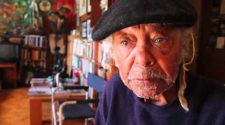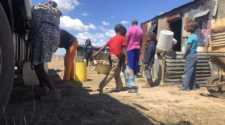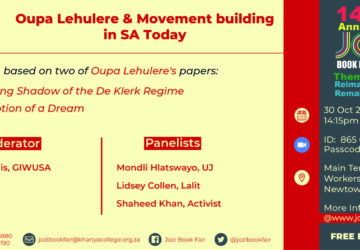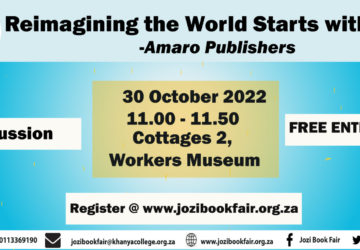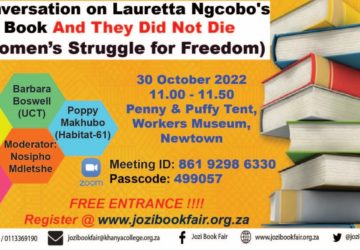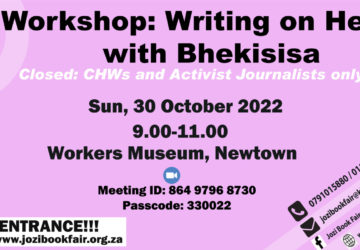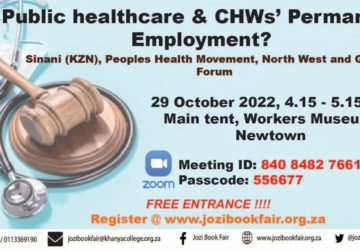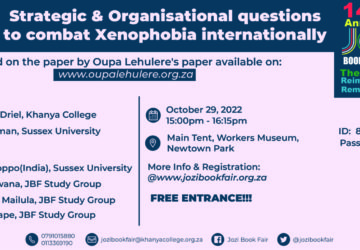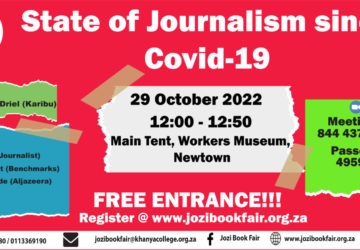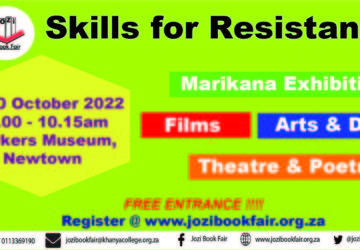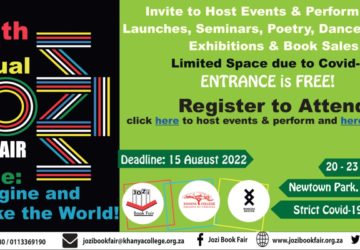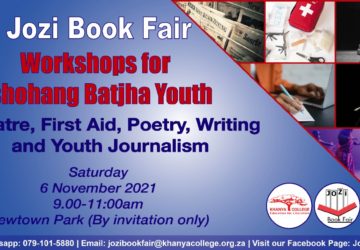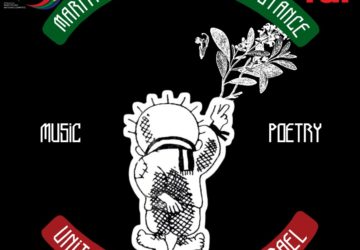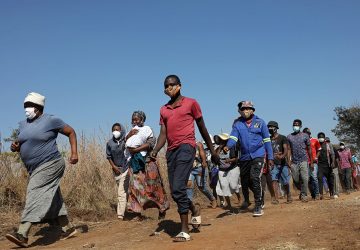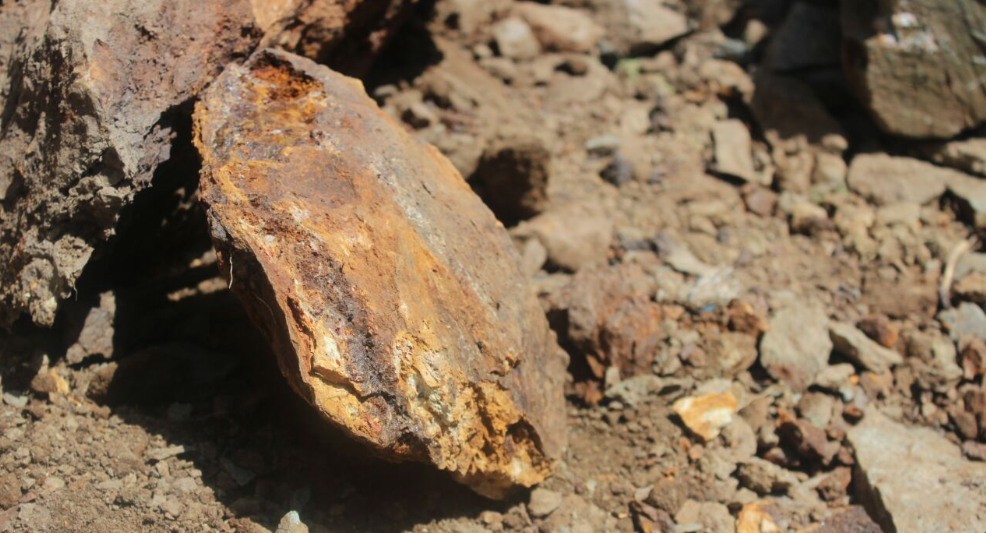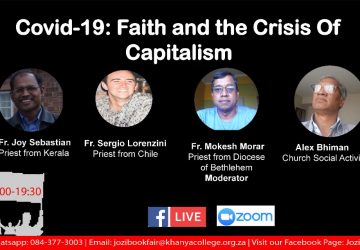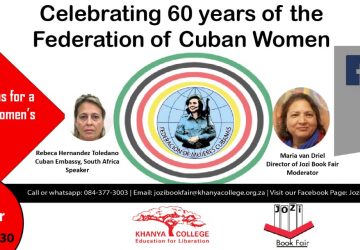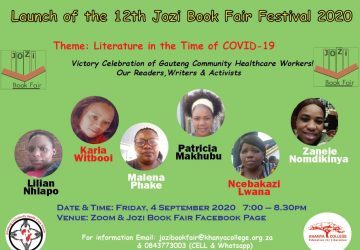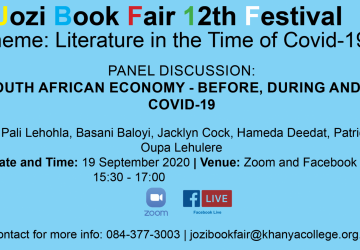| Download PDF |
Interview by Susheela Mahendran
Charvaka Roy* (name changed) is a political activist from India. He currently lives in Kolkata, West Bengal. Susheela Mahendran spoke to him about the situation during the COVID-19 pandemic, state oppression, the Hindu and Muslim enmity, peasantry as well as class and caste issues in India.
Hi, Charvaka, thanks for talking to us. Right now there are 40,084 confirmed COVID-19 cases and 1,326 deaths (as of 3 May). What do we actually know about the estimated numbers of unreported cases of COVID-19 related deaths and infected?
Charvaka Roy: There are very low number of tests still happening in India as of now. While this lockdown is a temporary measure to stop the spread, the ideal way is to test more and isolate the patients. Meanwhile, there are multiple reports of States messing up the numbers of COVID 19 related deaths. There are also videos being circulated where someone from the patient’s family is actively asking for information or help from authorities to know the whereabouts of their kin who were put in quarantine zones. And there are active spikes in rumours of reasons for death in the Death Certificate being misleading by calling COVID-19 deaths as renal failure or cardiac arrests or something else. There are severe actions taken against doctors too. In West Bengal, doctors were initially given raincoats instead of PPEs, and the healthworkers who speak up against these conditions across India are penalised and arrested by the police. All of these things do not bode well for the future of India as of now.
How is the public and private healthcare system divided?
Charvaka Roy: The healthcare system in India is abysmal at best. The National Health Profile puts the expenditure of GDP behind Healthcare at a meager 1.28%. This is not at all a good situation for a country which otherwise suffers greatly from malnutrition, steep numbers of annual cases of malaria, dengue fever and cancer. To answer your question, there is a sharp and steep divide between the private and public healthcare system. The private healthcare is for the middle and upper-classes who can afford it, and they themselves siphon off every last penny they can from the patients. Basically health has become a lucrative commodity. On the other hand, the government hospitals are always short on doctors, beds, nurses and mostly the newest technology to fight a disease. It is not uncommon to walk the aisles of a big public hospital in India and find patients lying on the floor or sharing beds. You see, it is an invisible war of the rich on the poor. And you see in government hospitals what you see in wartime situations, only that it is permanently there. To my knowledge, doctors and nurses are in general penalised for speaking out against their crisis in this pandemic, not only in West Bengal, but also in other parts of India. In the beginning there were few leaked videos of conditions inside the quarantine facilities. Since then, cellphones are not allowed inside the quarantine wards.
How are lower class and caste people affected by this crisis?
Charvaka
Roy: Most of the Indian economy is run by the informal sector. This
basically includes all parts of the economy that does not directly
involve the State or Big Bourgeoisie
infrastructure. For example, in India the biggest industrial sector
is the agricultural sector, which in itself is subdivided into small
and medium level landed classes. The employment in agriculture is
divided as well: most people who don’t own land or own a very small
share of land work in other people’s fields as day-labourers and
sharecroppers. For a considerable part of the year a large section of
these agricultural workers, as well as other people from the rural
areas, move to cities and industrial sectors for work. This means
that a large part of the Indian economy employs labourers who are
migrants from their respective villages and provinces (henceforth
states). Among these large labouring classes, most are from the
so-called lower castes, politically named Dalits
and Bahujans,
as well as Muslims.
The
lockdown was announced without prior notice, information or warning.
The sudden enforcement of lockdown without giving any time for people
to prepare for it comes from a class-character that does not at all
care for the population or the millions of poor people who are now
starving in the streets. The simple attitude of Modi is reminiscent
of another historical figure who ruled during Medieval era, the Mad
Sultan, Muhammad bin Tughlaq. He too did as he wished with power.
Modi announced the single-day lockdown calling it “Janta Curfew”
or People’s Curfew, and then announced a 21-day lockdown from 24
March. All the migrant labourers stuck in different states were then
trapped wherever they were and had to face brutal beatings and
teargas shelling by police. One important aspect of this lockdown is
that the class division that was already there in India has become
sharper and almost vertical at this point. The middle-class, the
petit-bourgeoisie
and the upper classes were quick to stock up and bunker-down in their
homes, while the rest of Indian poor, migrant workers, workers, small
business owners and practically anyone without the capacity to ration
up for months were doomed.
The
media didn’t help either. We have a section of media that acts not
just docile, but practically like a mouthpiece for the government,
and unfortunately, for BJP’s [current ruling party, Bharatiya
Janata Party]
ideals. The distortion and misinformation propagated by these media
houses, along with the spineless middle and upper-classes’ cheer
for Modi’s abrupt decisions, police brutalities, and Modi’s
fanfares with pots and pans and candles makes me think not just of
the vitriolic elitism in them, but also the secret perverted desire
to appease a Freudian father figure.
And so here we are, still on an extended lockdown, people starving, the economy dying and meanwhile, testing (though it has increased) is still only of a handful of the billion strong population. Meanwhile, deep down, the upper-caste consisting mostly of middle and upper-classes, have finally found a legitimate reason for practicing segregation and untouchability. The act of ‘social distancing’ is not an innocent and precautionary measure in India; rather it has finally given legitimacy to the thousand year old practice of casteism in India. Here the elites and middle-classes are mostly upper castes, and the poor the Dalits and Bahujans, and Muslims and Adivasis groups. The elites can now really practice segregation in the name of precautionary measures. I am afraid that systems are already at play where we might see a newer kind of apartheid across the world through newer forms of racism, including casteism in India.
Are there financial resources to pay the lost wages of poor working class and caste people?
Charvaka Roy: The Modi-led government has prioritised some populist gimmicks, weapon trade and NRC [National Register of Citizens], NPR [National Population Register] etc. This government has spent Rs2,989 crore [ten million Indian Rupees] on making a tall statue, and allocated a budget of Rs1,400 crore for the NPR-CAA [Citizenship Amendment Act] cost. For the workers, however, the Supreme Court has decided that since they are getting food, they do not require to be paid wages by the government during this period of lockdown. What it shows is the lack of empathy for workers, and simply put, a complete disregard for the millions of migrant workers trapped in different places other than their own.
What is the Indian government doing to help poor and migrant working class people? How are people organising themselves?
Charvaka
Roy: There already was an emergency or natural calamity fund for
situations like this in India called the Prime Minister’s National
Relief Fund (PMNRF). What is astounding in this situation is that
Modi made a separate fund under a private NGO registration called
PM-Cares. It is not clear what exactly he cares about, nor are the
expenditure bills of PM-Cares public. Basically it seems to be a
large loophole to avoid audits and records of using public money. It
is a pure mystery why Modi won’t touch the PMNRF, unless of course
for its liabilities that have to be produced to the public.
The government, and these are mostly State governments not Central aids, are trying to arrange for food and rations to be delivered to the poorest of the people and the migrant workers in some cases. However, due to the COVID positive cases of several Municipality workers, there are problems in distribution too. Several small but efficient groups have popped up that are collecting funds and donating among the poor the essential rations, masks, sanitisers, soaps and such. However, the situation is such that if the lockdown continues, all individual or civil society endeavours for providing rations will fall short. And it is already happening.
Can you tell us more about the Hindu and Muslim enmity and how this anti-muslim rhetoric is used again in COVID-19 pandemic?
Charvaka
Roy: The Hindu and Muslim enmity we see on the ground today is
historical, and it’s the joint creation of English colonisers,
Hindu upper-castes, and some Muslim elites. In a bid to outdo the
centuries of old rule of the Mughals and their practical economic
effects, as well as ideological effects on the then India, the
Englishman “discovered” the glory of “Hindooism”. To be
historically accurate, the word ‘Hindooism’ first appears in an
Englishman’s work; there was no such thing called Hinduism before
that. Not coincidentally, the idea of Hindu-Muslim conflict was part
of the Englishman’s “Divide and Rule” policy.
The
Hindu upper-caste population, especially the Brahmins, saw this as an
opportunity to not just hone in a nationalist spirit, but also
reinforce strong sentiments of a rather Abrahamic regimentation among
different sects now conflated as Hindus. Unfortunately though, a
large portion of this upper-caste Hindu leadership saw to it that
they rather serve the British and spend more time despising the
Muslims. Among its early thinkers, both VD Savarkar (who swore to
help the British) and MS Golwalkar, are the people who took lessons
from Hitlers’ Nazi Party and wanted to have a similar political
structure in India. These fascists are the founders of Hindutva, an
ideology that promotes purity of race, and implementation of the much
racist, casteist and misogynist text as ‘Manu
Samhita’
in the Indian political situation. The partition of India,
spearheaded by political elites of the then India, further wedged a
gap between Hindu-Muslim unity. Ever since then, all acts of demands
for worker’s rights, food, clothing, shelter, and human rights are
evaded either by bombarding people with the news of a new border
conflict, or a local Hindu-Muslim riot. The largest of its kind was
on 6 December 1992, when thousands of Hindutva members went and
demolished a mosque to make a Ram temple instead. This single act
sparked riots throughout the country, and pretty soon fortified power
for the BJP-led government in the elections.
Recently, there has been another incident that has lead to mass hysteria against Muslims. After Modi abruptly declared a lockdown, a congregation of Muslims called “Tableeghi Jamaat” were trapped in a Mosque in Delhi. The situation of India is such that the fear of a Muslim being lynched by Hindu mobs is high since the new BJP regime has taken over. The vitriol against Muslims has doubled itself since this congregation, as a section of media showed these trapped men as intentionally hiding from the authorities. And since some of them were COVID 19 confirmed cases, the idea that was rolled out was that Muslims across the sub-continent are actively spreading the virus to kill Hindus, intentionally spitting at people and on groceries. Several fake videos were also circulated via Whatsapp to further spread this vitriolic hatred against Muslims. So now we have a COVID-19 crisis, as well as a crisis of extreme segregation and enmity against Muslims.
What do we actually know about the COVID-19 crisis in former federal state Jammu and Kashmir, now two union territories since 31 October 2019?
Charvaka Roy: On 5 August, 2019 the Indian government, under the BJP regime, abrogated Article 370 in Jammu and Kashmir which granted a special status and land rights to Jammu and Kashmir people. Then it went further and divided the province, making Ladakh a separate territory. This was done according to BJP’s manifesto before the election, and it meant that the already tense situation of Indian-administered Kashmir now took a sordid turn. It resulted in the quick house arrests of all the leaders native to Kashmir, and a gag on press and media. It further moved in several thousands of troops inside Kashmir, and ordered a curfew. Kashmir has since been under lockdown unfortunately, and this lockdown for the Coronavirus did not change much in their day-to-day lives, because life was already that of a captive there.
How is this restrictive lockdown also used politically by the BJP-government?
Charvaka
Roy: The lockdown has given the BJP breathing space politically. It
was under severe pressure after it declared a National Register for
Citizens (NRC) and National Population Register (NPR) to be conducted
in a 1.2 billion strong population in India. Once again, it was done
according to BJP’s pre-election Manifesto. NRC or NPR was supposed
to create a register for citizens where everyone had to “prove
their citizenship” by showing some form of document of an ancestor.
This is but a pipe dream for most of India where even the landed
class seldom has ancestral documents. And it was supposed to “find
out” the “outsiders” in India and deport them to Refugee Camps,
which, by this time, have been shown to be nothing but unsanitary,
unhealthy, criminally designed labour camps to extort free labour
from the regime’s “undesired” people, which, to no one’s
surprise, are Muslims.
However, the plan backfired in Assam,
where the first NRC and the second one too, found more Hindus unable
to prove their citizenship than the scanty Muslim population. Which
is why they introduced the CAA or Citizenship Amendment Act. By the
power of this act, any person from any faith except Muslims from
neighbouring countries can be granted citizenship if they can prove
that they were tortured and hounded in their original country. This
too, seemed too far fetched, because there is still no way most
people can produce ancestral documents, or “proof” of being
attacked in their previous countries. The nation was thus flooded
with protests, and we saw, apart from a separate block of people
still supporting BJP, people from all faiths and political
backgrounds on the streets against CAA and NPR. This lockdown thus
has political benefits for BJP, and is not just a medical
precautionary measure by the government.
How is Indian economy exploited in international trade?
Charvaka
Roy: To answer your question briefly, the Indian bourgeoisie mostly
exports its natural resources, while assembling or taking partial
measures in actual production. Or, in other cases, the production is
done in sweat shops, while the Value Realisation happens somewhere in
the West. Both conditions exist, and both are hurting the people
equally. It has kept the Indian economy at the mercy of large
corporate firms, and is leaving it with a severe handicap where we
are at the mercy of foreign production and distribution. The
national, regional or local bourgeoisie has to struggle against such
large corporate franchises and supply structures. It severely
cripples the indigenous producers and labour force, and leaves them
at the mercy of some stock falls or rises in a foreign land.
The Coronavirus situation has worsened the condition that was already in place. It has caused a large spike in the unemployment rate and has left the informal economy in a derelict state. We were already at a 50 years highest rate of unemployment in India. Now we face a further spike in that, with nowhere to go. We are looking at starvation and the loss of livelihood of millions of people as we speak, and things do not look good for the future either. Primarily because of the BJP’s penchant for corporate bailouts with nationalised banks and revenues, and Modi’s own disastrous foreign policies.
Indian activist Manish Azad is tracing the COVID-19 to meat production in Wuhan, China. The second story in the media is that the virus spread from Wuhan’s wet market (a small market selling fish and meat like our local fish market) to the whole world. The Scripps Research Institute has denied this in their study. According to them, “the way COVID-19 has evolved (mutation) and its gene structure indicates it requires a high population density of animals. And this is possible only at places where industrial production of animals take place; where they are kept tightly packed. Chicken and pork are produced exclusively under similar conditions. It has been said in research that since the immune system of the pigs is relatively similar to that of humans, this COVID-19 has come to humans through pigs.” Do you think human beings need to change their lifestyle, eating habits, to avoid future viruses that can be a result of industrial meat production or environmental exploitation?
Charvaka
Roy: I appreciate and, to an extent understand, the resistance
against large corporate firms capitalising on meat consumption and
production. However, I live in a country where the fascists and
bourgeoisie are all vegetarian, and some “progressive” elite
activists are vegan too. Currently I have nothing against the
consumption of meat and fish; in fact in several places it is
intrinsically related to a minority group or religion’s identity,
and in fact, is an act of rebellion in some cases. The fact remains
that for the most part of Indian working classes, meat or fish is the
cheapest and most available source of nutrients, and these poor
people and minority groups suffer persecution because of their
consumption, by people who have criminalised and ideologically
preached against eating animal protein. Muslims are often lynched or
beaten down to within an inch of their lives for consumption or trade
of beef, and so are Dalits for consumption of beef or pork.
The logic of big capital in meat trade is not applicable in India, and as long as my country is still on the top of the list of Global Hunger Index, I am in no mood to speak against meat eating. In fact I shall preach it.
What do you expect from the Indian Left?
Charvaka Roy: The idea that the Indian Left, of varying ideologies and origins, is actively taking part in relief work is commendable. However, this should also be the time when the common masses is made aware of the dismal conditions we live in, and realise that true freedom comes not from benevolent work of civil society, or (often inadequate) monthly rations doled out as a favour, but rather the goal should be to encourage the masses to take control of the means of production. At least, that is the lesson I am drawing from the regular updates and images of the starving and unemployed millions.
Thank you for the conversation!
This
Interview article was submitted on 5 May 2020 by Susheela Mahendran.
Susheela Mahendran is a political scientist, artist and
free journalist based in Kolkata, India. She has been a regular
contributor to Lower Class Magazine, Klasse gegen Klasse and Die
Freiheitsliebe. She co-organised Berlin’s inaugural Anti-Colonial
Month in 2019 and is active in internationalist, socialist-feminist
spaces.
You
may republish this article, so long as you credit the authors and
Karibu! Online (www.Karibu.org.za), and do not change the text.
Please include a link back to the original article.







